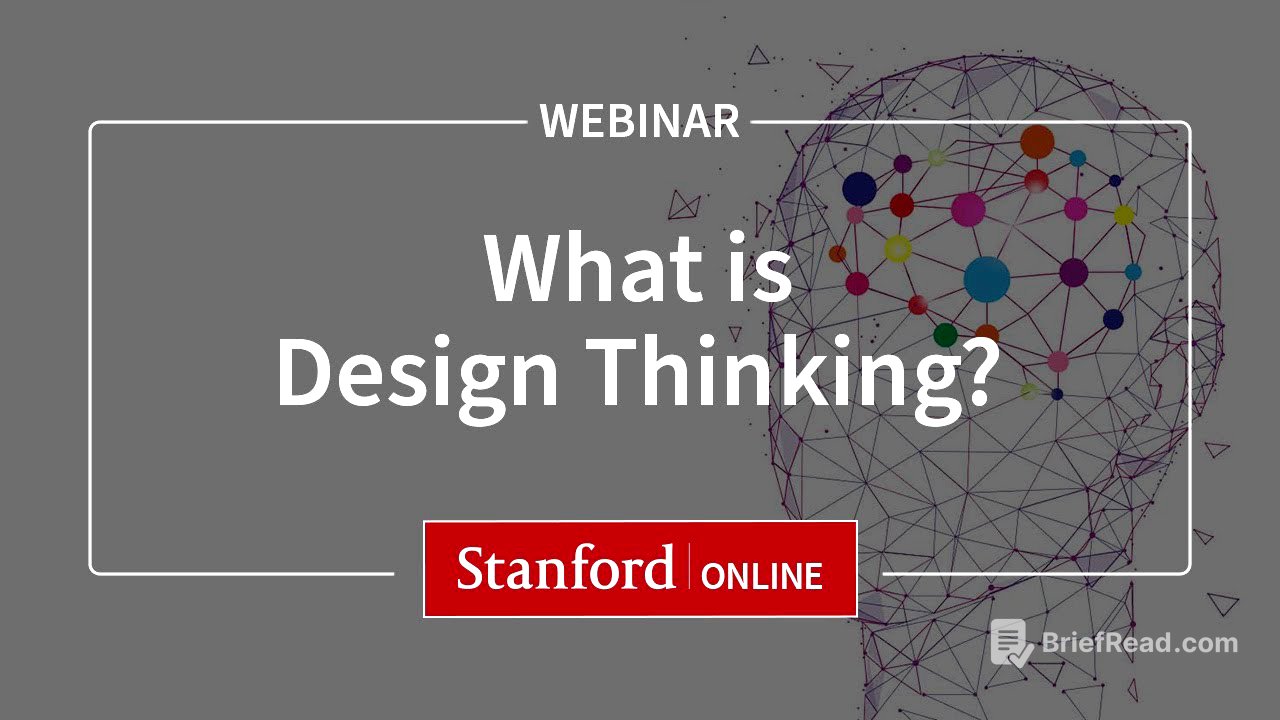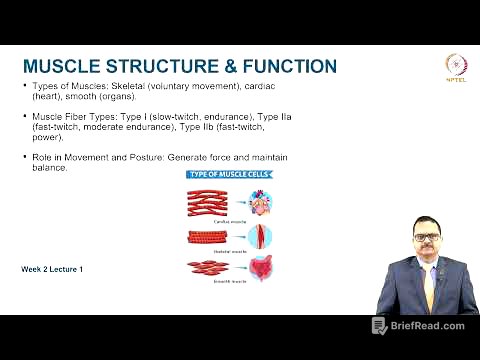TLDR;
This video explains design thinking as a method for generating and evaluating ideas, emphasizing its accessibility to individuals in various roles and organizations. It challenges the notion of design thinking as a specialized skill, advocating for its use in diverse problem-solving scenarios. The speakers highlight the importance of generating a high volume of ideas and introduce a process visualization involving empathy, problem definition, ideation, prototyping, and testing. They stress that design thinking is not a rigid formula but a set of mindsets, illustrating its application through real-world stories and examples. The discussion also covers the significance of problem finding, diverging before converging on solutions, and the need for thoughtful, inquiry-led action to address uncertainty.
- Design thinking is a method for generating and evaluating ideas, accessible to all.
- Generating a high volume of ideas is crucial for better outcomes.
- Design thinking involves empathy, problem definition, ideation, prototyping, and testing.
- Problem finding is as important as problem-solving.
- Thoughtful, inquiry-led action is essential for addressing uncertainty.
Introduction [0:00]
Perry Clavon and Jeremy Utley introduce themselves as faculty at Stanford's d.school, emphasizing that design thinking is a way to generate and test ideas, not a specialized skill. They aim to make design thinking accessible to anyone in any role or organization, applicable to various problems from product development to process design. The goal is to help individuals become more effective at solving problems by coming up with ideas and learning whether they're good ideas.
Getting a good idea [2:22]
The speakers highlight a quote by Linus Pauling: "To get a good idea, you need a lot of ideas." Research indicates that the number of ideas generated directly affects the quality of the best ideas. Design thinking is presented as an exceptional methodology for generating a high volume of ideas.
Design thinking process visualization [3:03]
The speakers reference a popular visualization of the design process: empathize, define, ideate, prototype, and test. This visualization helps categorize various tools designers use. However, they caution against viewing design thinking as a linear recipe, emphasizing it's more about mindsets.
Bill Pacheco [5:28]
The speakers introduce Bill Pacheco, an engineering leader and instructor, as an example of someone who has successfully applied design thinking. They plan to share Pacheco's story to illustrate how a designer's mindset leads to breakthroughs and meaningful impact.
Empathy [8:49]
Perry Clavon shares a story about Bill Pacheco's work at Cybex, a fitness equipment company. Pacheco visited a gym and used empathy techniques, observing users on treadmills. He noticed that people appeared afraid, gripping the machines tightly. This observation led him to understand the emotions of the users, specifically fear, which he used to launch into design thinking.
Rapid prototyping [11:11]
Pacheco developed ideas to change the structure of treadmills to address the fear he observed. He created quick drawings and prototypes with added railings for stability. However, when he presented these ideas to his boss, the feedback was negative, as the boss didn't see the relevance to treadmills.
Prototype and test [12:17]
Despite the negative feedback, Pacheco believed in his insight and continued to prototype and test his ideas. He built rough prototypes with extra railings and took them to a hotel gym. He measured how many people chose the modified machine versus the existing one, gathering data on user response.
Human needs [14:09]
The data from the hotel gym validated Pacheco's insight, showing that people preferred the machine with added safety features. This led to a successful product launch for Cybex. Pacheco's success stemmed from solving a real human need, addressing the emotion of fear, and reframing the problem to design a better product.
We need a lot of ideas [19:03]
The speakers discuss the importance of conviction and data in overcoming resistance to new ideas. Design thinking puts individuals in close proximity to the people they are designing for, leading to a strong conviction about their needs. Creating new data sets through prototyping and testing can help validate ideas and influence decision-making, even when facing initial skepticism from leadership.
Process [22:47]
The speakers transition to discussing how they currently describe the design process, moving away from the outdated five-hexagon model. They emphasize that design thinking advances conventional problem-solving by diverging to generate many ideas before converging on a solution. Additionally, they highlight the importance of problem finding, generating multiple potential problems before converging on one.
Rick White [22:37]
Perry Clavon references a comment from Rick White, who noted that businesses often focus on the product (output), while the creative process needs more inputs. Clavon agrees, emphasizing that designers should be mindful of inputs and seek more content to frame up interesting new questions.
The problem [26:56]
The speakers address a comment from Jonathan, who described the challenge of business partners reverting to the easiest path after generating many ideas through design thinking. They suggest using rapid prototyping techniques to keep wilder ideas alive and create data for evaluation.
Create something later [29:23]
If creating something during the interaction isn't possible, scheduling time for it later is crucial. Assigning ownership and a clear follow-up plan ensures that new ideas are not neglected. This involves designating someone to take responsibility, defining the next steps, and allocating time by reducing other responsibilities.
Sorting ideas [31:41]
In response to a question about sorting through many ideas, the speakers recommend being mindful of the selection process. They suggest using multiple selection criteria, such as what could dazzle the customer or deliver a unique experience, rather than defaulting to criteria like budget constraints.
Building multiple solutions [35:38]
The speakers address a comment about customers not knowing what they want, emphasizing that human-centered design is not customer-led. They stress the importance of crafting experiments that yield highly credible data, rather than simply asking customers what they want.
Design thinking without engineering [40:34]
The speakers provide an example of design thinking that doesn't involve engineering, referencing a situation at Westfield Mall in San Francisco. They highlight the importance of creating environments and experiences that yield more credible data than survey information.
How do you approach teams [43:15]
The speakers discuss how to approach teams with design thinking, emphasizing the importance of a consistent process. They note that teams often struggle when individuals are at different stages of the design process simultaneously. Teaching a consistent process provides a common language and understanding, enabling more effective collaboration.
Wrap-up [46:06]
The speakers address questions about applying design thinking to water utilities and health metrics. They emphasize gathering input, understanding emotional needs, framing challenges, and prototyping solutions. They also highlight the importance of challenging conventional wisdom and being thoughtful about the approach, rather than seeking definitive answers.
What's our big unknown? [54:17]
The speakers conclude by emphasizing that they are "approach guys" rather than "answer guys." They advocate for thoughtful, deliberate action informed by inquiry, addressing uncertainty on both the solutions and problems sides. They introduce a simple wheel to help determine the big unknown and guide the selection of appropriate tools. The goal is to make design thinking accessible and bring rigor, fun, and better problem-solving to various roles and industries.







![If I Wanted To Become a Millionaire in 2025, This Is What I'd Do [FULL BLUEPRINT]](https://wm-img.halpindev.com/p-briefread_c-10_b-10/urlb/aHR0cDovL2ltZy55b3V0dWJlLmNvbS92aS9BTjJLcFJCc21SWS9ocWRlZmF1bHQuanBn.jpg)

